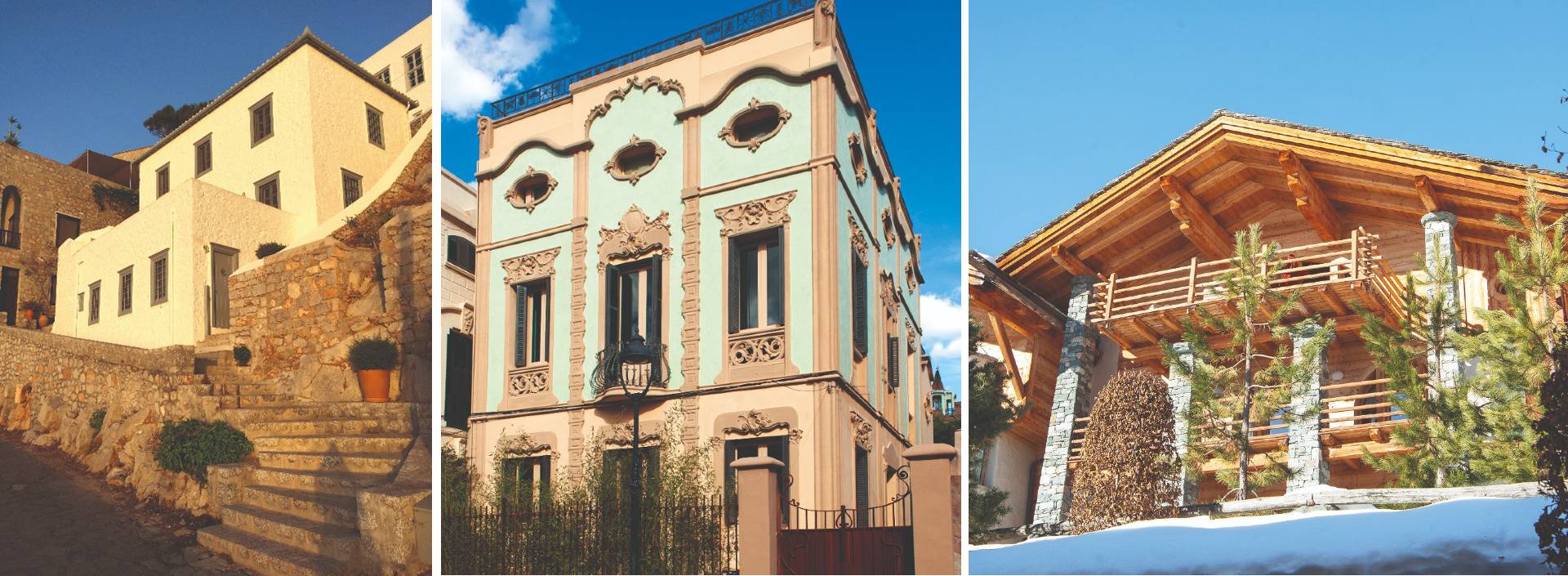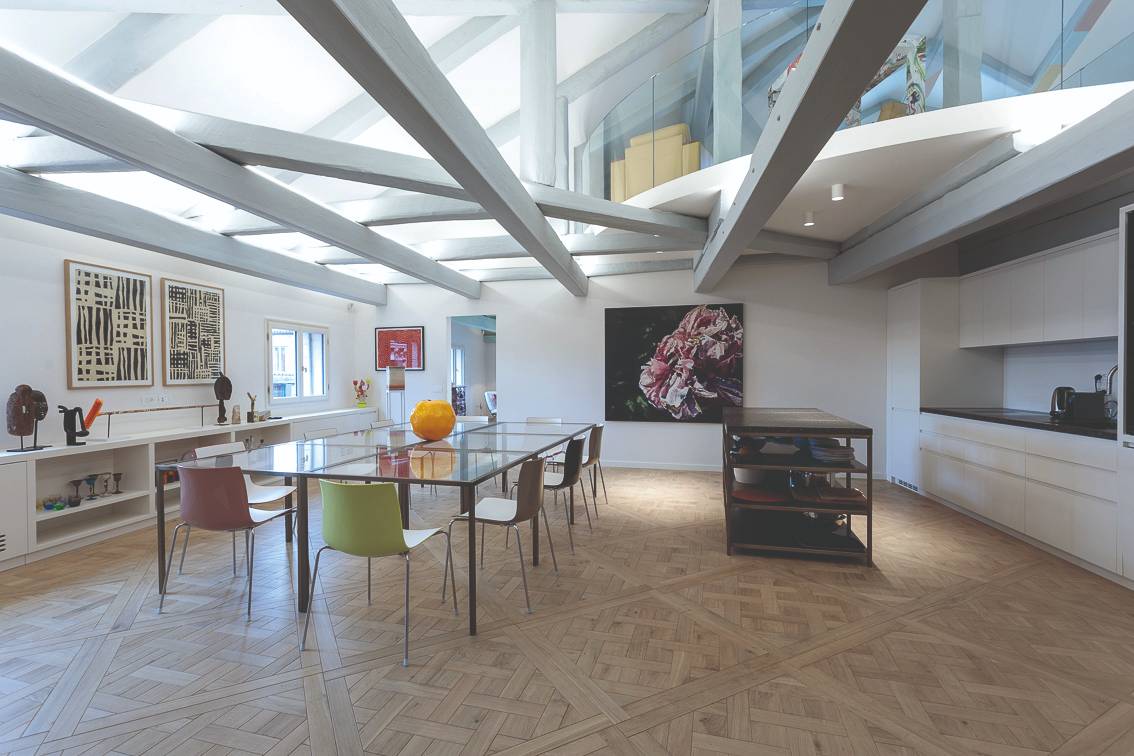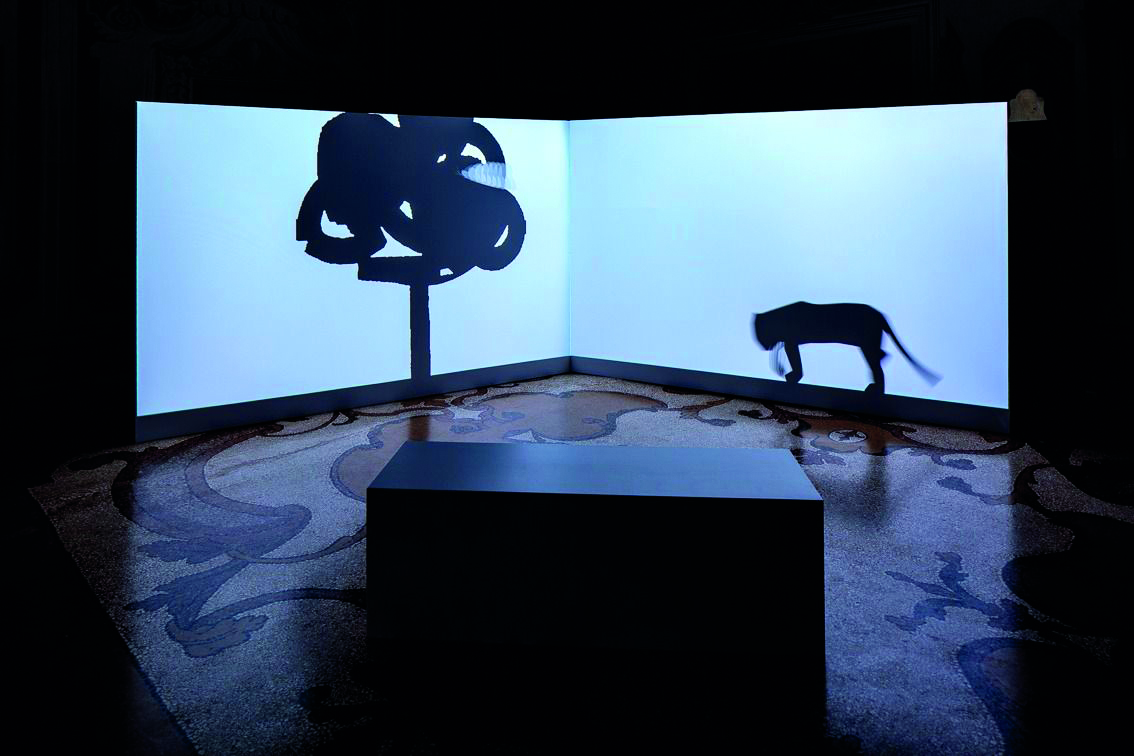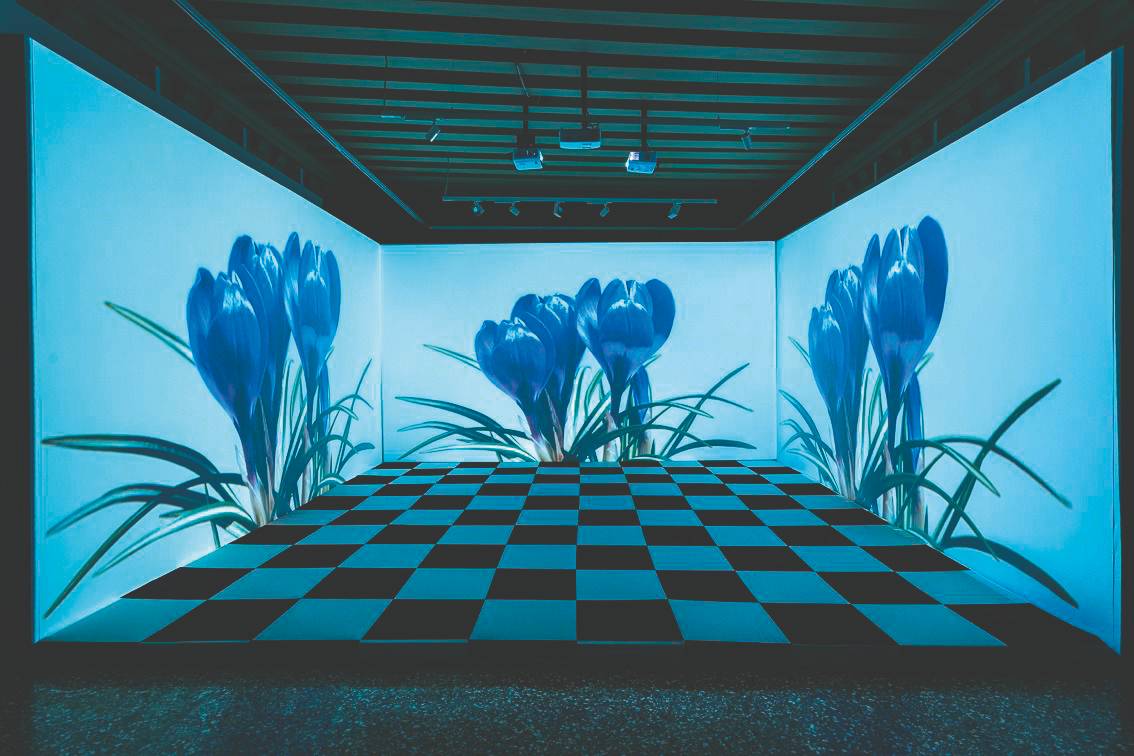

Didier Guillon, former president of the Valmont Group, artist, and founder of the Valmont Foundation and Residences, shows us his personal vision of art. Exhibitions are temporary – like the art itself, dreams that use the present to see the future.
An entrepreneur, though an artist above all, an unconventional curator and cultural agitator. Didier Guillon, formerly the president of luxury cosmetics company Valmont Group, is the founder and animator of Fondation Valmont, whose primary office is in Venice. Guillon paired his passion for art with a sophisticated vision on the present and the future. We are not talking digital art or NFTs – Didier Guillon loves traditional art and artists who are open to new fields of creation. He loves metaphors, too – see his beloved gorilla – and new ways to ‘enchant’ reality. We have been invited to visit the beautiful Résidence Bonvicini, where the Foundation and exhibition Peter Pan. La nécessité du rêve are.
A new structure for Fondation Valmont in Venice: temporary exhibition areas and art residences
It’s simple and logical: exhibition will be produced in cooperation with the artists who did their residences with Valmont in Hydra (Greece), Verbier (Switzerland), Venice, and in the future, Barcelona. Exhibition Peter Pan. La nécessité du rêve has been created and imagined in Hydra. Why there, and not in Venice? We thought it would be interesting to conceive an idea, a philosophical strategy, in the cradle of our civilization, and later bring it to Venice, thus perpetuating the centuries-old relationship that exists between Greece and Venice. Our exhibition in Venice also took advantage of the extant art audience coming from the Art Biennale, facilitating networking between artists, galleries, institutions, etc. For 2024, the year of the next Art Biennale, we will plan something similar. Not just art, but a wide-open look on modernity.

Quali sono gli obiettivi prospettici di questo nuovo assetto della Fondazione? Vi è una idea futura che porta alla formazione di una Collezione permanente a Venezia e di conseguenza a una apertura “museale” di essa?
Il progetto di Fondation Valmont si inserisce in una prospettiva più ampia, in una visione futura di accompagnamento e sviluppo di azioni e comportamenti da adottare per essere partecipi del rinnovamento del nostro pianeta. Non si tratta, quindi, di esporre delle opere già fatte, ma delle opere che devono ancora essere fatte, in una dimensione differente e corresponsabile di sviluppo duraturo. Per me esporre la collezione che apparteneva a mio nonno non ha alcun interesse, perché significherebbe ingessarsi in una dimensione, per quanto alta, storica; noi invece vogliamo con i nostri nuovi progetti accompagnare i visitatori, le nuove generazioni, nel futuro. Certo esiste una collezione Valmont, ma questa è in continuo movimento, distribuita nelle varie Maisons in giro per il mondo. Per me esporre le collezioni in maniera permanente non ha alcun senso, non voglio creare un mausoleo. Le opere che commissioniamo per le mostre, essendo progetti sitespecific, installazioni fisiche, vengono alla fine smontate. L’artista si porta via l’opera o parti di essa, mentre noi distruggiamo l’installazione, perché non vogliamo conservare un lavoro fuori dal contesto per cui è stato creato. Distruggo e riuso quegli elementi dell’opera nella misura in cui è possibile riciclarli: cartone, carta, giornali… I miei disegni sono fatti sul «New York Times» per esempio; tutto si trasforma, niente rimane inalterato.

The goals of the Foundation
The project of Fondation Valmont falls within a larger perspective, a vision for the future that will allow us to participate in the renewal of our planet. We won’t show pre-made art, but art that still has to be created. I don’t care about showing my grandfather’s art collection, because doing so would mean to stick to a historical dimension, however elevated it may be. We want to accompany our audience into the new generation of art, into the future. A Valmont Collection does exist, but showing it permanently makes no sense to me. I don’t want to build another museum. The art that we commission for our exhibitions are site-specific projects, physical installations that will be dismantled at the end. The artist will take it home, wholly or partially, and we take apart the installation altogether. We don’t want to hold on to a piece of art outside of the context it has been created. We take it apart and recycle what can be.
The Valmont residences
The next residence, the last one of this cycle, will open in Barcelona. Each residence matches a season: Verbier winter, Venice spring, Hydra summer, Barcelona autumn, which is why our programmes also follow the same calendar. What is common to all, though, is sustainability. We are looking at plastic-free everything. No plastic bottles here in Venice. In Verbier, we financed a local skimaker that builds zero-impact gear. We are working on an important project – I cannot reveal much now – on eco-responsibility in Venice. In Barcelona, we support Artigas Foundation to reach energy autonomy in powering their kilns, where they make beautiful pottery and where Miró once worked. A total of four residences, four seasons, four eco-responsible projects. We are looking at the future, not the past, even though we do need history to build our future.

Supporting art today
The role of our Foundation is to show, to involve all who are interested in our projects on the future. We look for artists here in Venice, a universal city and a point of attraction for the arts. Venice is a magical place that has always proved it can reinvent itself. We want to draw art here following this ever-evolving identity. We must reinvent ourselves continuously. It is the best way to give some positive, real contribution to this amazing, unique city.
Valmont and the Valmont Foundation
Fondation Valmont has no interest in chemistry – that much we leave to actual chemists. Art is the word, here, the distinctive element that distinguishes us from bigger brands like l’Oréal, which have always employed models to promote their products. We chose art. Our designs have always had an artistic flair to them, whether digital or physical. Art entered the Maison Valmont and today, with Fondation Valmont, we thought of accepting a further mission that starts in Venice. If all goes to plan, Venice will become a reference point for eco-responsibility and contribute to stimulate the whole of Valmont to the same set of values. We would want to soon be able to say. “Look at Venice, a city that has always known how to reinvent itself, and that is known looking forward to the future.”
Peter Pan. La nécessité du rêve – escape from reality, a dreamlike sequence, a pause from the unsustainability of the real
Fairy tales are universally known as pretext to confront real problems. I consider them to be a sort of cultural bridge, literary bases that will help us see and analyse things from a different point of view. This is what we do, here, as artists: we work to make these timeless stories more modern. Peter Pan is a story of evasion, of dream. However, as artists and as heralds of public messages and contents, we cannot limit to that our considerations. We must dig deeper, investigate under the surface of images and words. The beauty of our work is all there.

Cinema
Motion pictures are essential to complete our latest Peter Pan project. It is essential to offer different itineraries to all visitors, so that art can engage all their senses. The artists who, over the last four years, participated to the several instalments of our exhibitions proved they were able to create very personal and very original concepts. Silvano Rubino, for example, created labyrinths and photography and video art installations, Isao used ceramics and created the huge Alice installation… As far as I’m concerned, to reinvent myself has always been part of my creative process.
You and other artists
Each of us artists have their own way of going about creation – it’s our strength. The exhibitions/workshops that we see in the several residences is an open, safe space where we can show our feelings without fear of being judged. On top of it, there’s an element of healthy competition, which encourages each of us to give their best.
The gorilla
Since the 1990s, the gorilla population in the Uganda/ Congo area has been growing. People understood they shouldn’t kill gorillas, that’s a stupid thing to do. We should protect them, and show their habitat to tourists who are interested in their lives. The whole community benefited from this approach. Gorillas are a beautiful symbol of resilience and community.